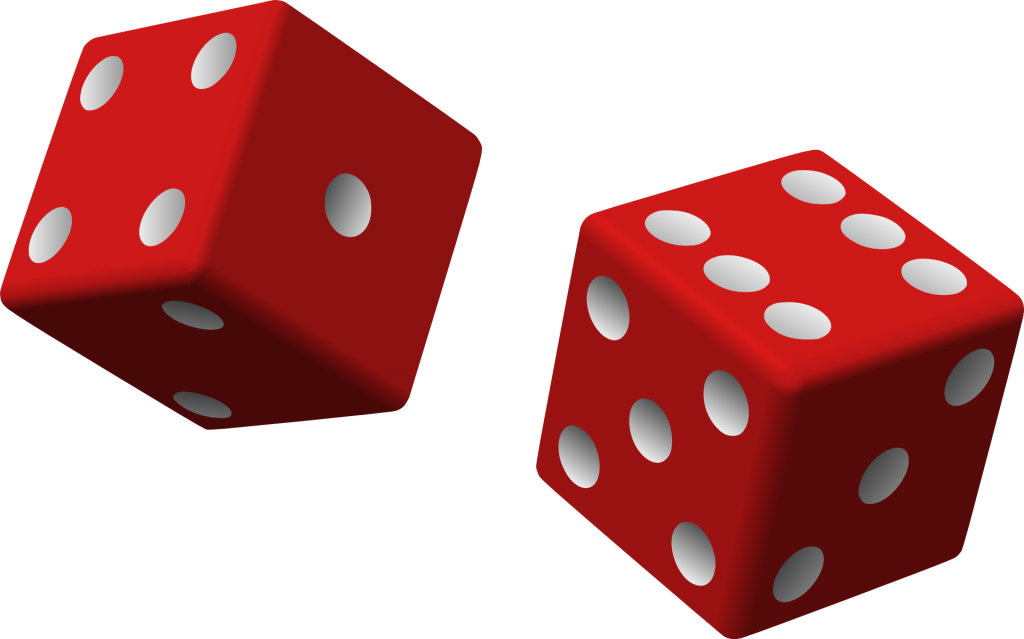What Was the First Game of Dice? A Brief History
If you’re a fan of games of chance and strategy, dice has probably been one of the games you’ve come across. However, did you know that this popular game has been around since the time of ancient Mesopotamia?
Read on to learn everything you’d want to know about this ancient and popular game of dice!
Independent Emergence
Dice is particularly unique because instead of originating in one area and then spreading in popularity, dice throwing developed independently throughout the world.
The first dice throwers were shamans instead of gamers, and are believed to be the first ones who marked their dice. They used dice as a form of divination by interpreting the dice as a message from their gods.
Materials
The oldest known dice that date back nearly 8,000 years ago were created from found objects such as fruit pits, pebbles, and seashells. Today’s direct precursors were made from the ankle bones of hoofed sheep and oxen. The bones, also called astragali, were chosen because of their cube shape.
Around 7,000 years ago after the shamans, Mesopotamians began carving away the rounded sides of astragali in order to create a more cube shape. The outcome of their dice throws became substantially more complex because of its ability to land on six sides.
Mesopotamians at this time also began creating dice out of ivory, wood, and whalebone.
Today, dice made from the ankles of sheep are still being used in Mongolia. Tibetan Buddhists use a set of three dice made from conch shells as a tool for divination. There are spherical dice that have a weighted ball inside, 10 sided dice, and even 100 sided dice.
The First Game of Dice
The first game of dice appeared in the city of Ur in southern Mesopotamia. As an early game of backgammon played with a four-sided, pyramidal dice, it’s now called the “Royal Game of Ur.”
Only in 1300 BC Mesopotamia did our six-sided cubic hexahedron dice with pips made an appearance. This was before the introduction of Arabic numerals.
In the first millennium BC, civilizations in Greece, India, and China all played dice. Although it was illegal in Rome except during the winter solstice festival, many Romans played dice and called out the goddess Fortuna’s name as they rolled.
The term “roll the bones” developed by Roman legionary soldiers, who used squared-off pigs’ knuckles in order to wager for condemned prisoners’ property.
Even with the fall of the Roman Empire, civilizations throughout the world continued to play dice even into the Middle Ages.
Hazard
In the 1100s the popularity of dice in Medieval Europe grew. A game called Hazard developed that was played by aristocrats and commoners alike. The name was developed from a castle named Azart or Hazarth, which was besieged by crusader knights under Sir William of Tyre.
Although the Catholic Church tried to ban all games of gambling, schools, and guilds of dice still formed in reflection of its popularity.
Hazard traveled to the New World by ship. It transformed in name to crapaud, meaning “toad,” when it was introduced to the French in New Orleans around the 1700s.
As the game became popular with African American slaves in New Orleans, they further shortened the name to craps. Other historians believe the name came about from the way the French began calling it “crabs,” which is a losing roll of two.
No matter what the name’s origin is, this is still one of the most popular gambling games in the United States. It reached its height in casinos until the 1990s, when casinos began using other forms of gambling like slot machines.
Craps
The game of craps traveled north along the Mississippi River with those who traveled from New Orleans. The official credit to its next official adaptation came in 1813 to Bernard Xavier Philippe de Marigny de Mandeville, a French politician who was fond of gambling.
Craps retained its popularity into the twentieth century as World War II soldiers, American and European, played it during their downtime. As these soldiers occupied new territories and spread the game’s popularity, Hollywood also picked up on the game and began showcasing it in a variety of movies. This pushed the game into the public eye.
Craps is still a favorable game to gamblers because it’s one of the only ones where the player is in charge of the action of their own hand. After a roll of the dice, there are a number of combinations that the player can wager. There’s the Pass Line and Don’t Pass Line along with other predictions on where they think the dice will land.
You want to make sure your roll is hard enough to hit the back wall. Afterward, a roll of seven is losing on the Pass Line, the most common bet in craps. It’s never a good idea to say the number seven at a craps table.
You can also play a bet on the Come Line with the same rules as the Pass Line.
Games of Chance and Strategy
Dice is particularly fascinating because of its ancient and varied history. Even though a variety of countries have adopted it for their own, its roots are from the ancient practice of divination.
As it developed into a gambling game, it’s now appreciated for the strategy involved and the random properties that keep the game fresh and unexpected. In order to be good at the game of dice, you need to embrace the gambling aspect while keeping a cool head.
Want to learn more interesting gambling histories? Keep reading our blog for more!

